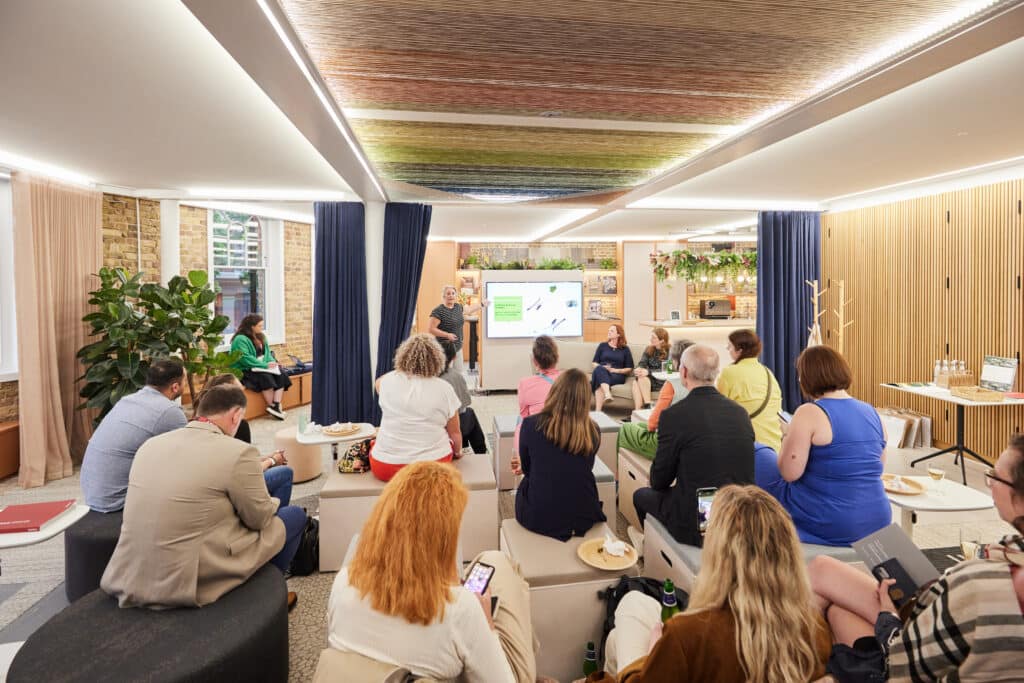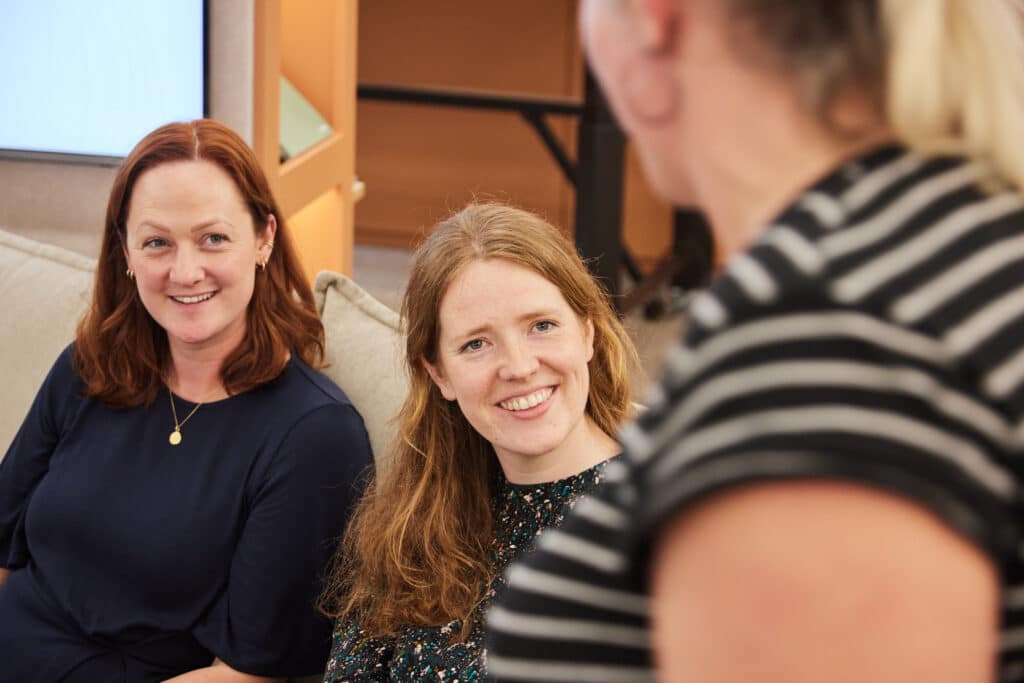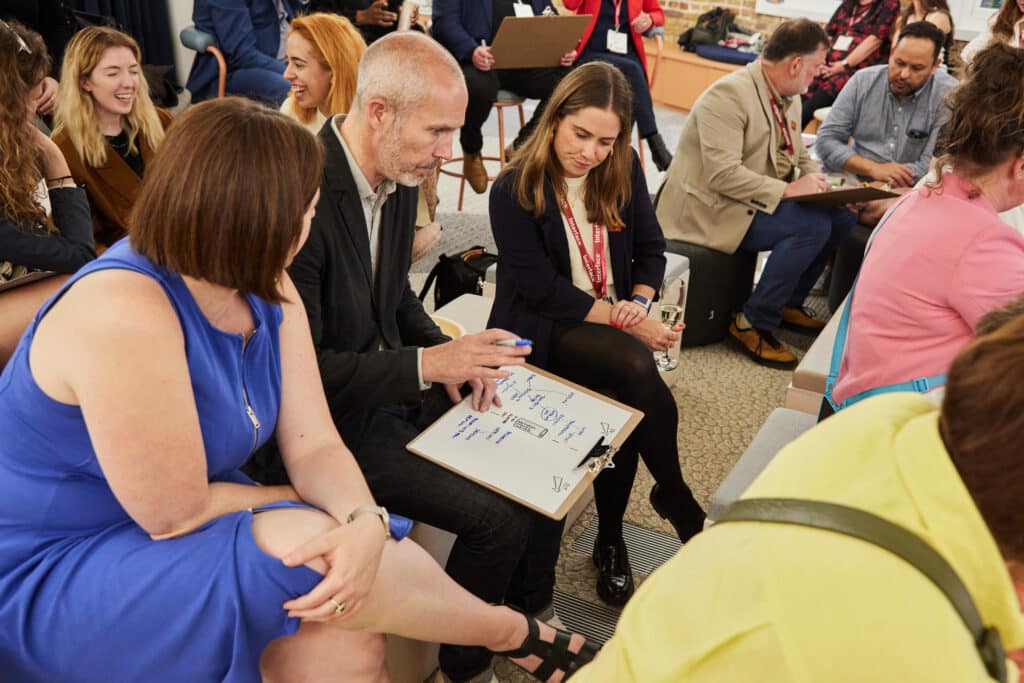Designing for circularity: A guide to taking a circular approach to specification
Circularity was the word on everyone’s lips at this year’s Clerkenwell Design Week – but what do designers need to know to ensure specifications contribute to the circular economy?
Our regional sustainability manager, Becky Gordon, hosted an interactive workshop from our Pennybank showroom with Lucy Bagshaw, project designer at tp bennett and Claire Potter, circular economy designer and lecturer.
In this session, they discussed the circular economy and encouraged attendees to consider everything that goes into designing, manufacturing and building a product, from transport emissions and packaging to materials. This was followed by a presentation and Q&A on the responsibilities of manufacturers and specifiers for creating more sustainable interiors.
If you weren’t able to join us, we’ve summarised the key considerations for circular specification below.

Design for the long-term
Manufacturers have a key role to play in making products more circular by considering the full lifecycle of the product and whether it can be recycled or reused after its first use. This means choosing durable materials that can stand the test of time and stay functional for longer.
As a specifier, you can also play your part by taking a circular approach to specification and selecting materials that are both timeless and durable. Following trends that will quickly become outdated, or using impractical colours that won’t stand the test of time can result in products needing to be replaced sooner than necessary. Whereas products in neutral and dark colours with textures and patterns can camouflage wear and tear – reducing replacement requirements for aesthetic reasons. It’s worth considering if existing furniture can be reused or adapted for reuse too, such as reupholstering, to avoid unnecessary waste.


Digest the data
When creating a circular specification, ensuring you have as much data as possible is crucial to judge whether a product supports your sustainability ambitions for a project. For example, technical specifications can be used to gain an understanding of recycled and biobased content, and EPDs provide information about the carbon footprint of the product. However, product certifications are expensive and, as such, may only be available from larger manufacturers. In this case, ask the manufacturers questions to determine the contents of the product and what its end-of-life options are to understand what will happen to the product after its use in your space.


Take a bespoke approach
To ensure your specification aligns with the client’s goals, you will need to take a tailored approach to every project. It’s important to understand what the client is envisioning and choose the suppliers that will help you make that vision a reality. Understanding the space and how it will be used should really guide your decisions on a specification that meets a client’s needs while also contributing to the circular economy.
Learn and adapt
While circularity is now more widely understood and appreciated across the commercial interiors sector, we still have a long way to go.
As Claire highlighted during the session, we are all continually learning from each other on how we can create spaces that reuse, recycle and reduce waste without sacrificing aesthetic preferences or performance expectations.
We have a responsibility to educate other partners across projects, including clients and contractors. For example, we should be stating the most sustainable adhesives within specifications and be open to discussions with contractors to help explain why particular products and installation methods have been chosen for the space.
Everyone is on a different path in their sustainability journey and is exposed to different information, but we all have a role to play in educating and supporting each other.
For support with choosing flooring that contributes to the circular economy for your next project, get in touch with our Concept Design Team.